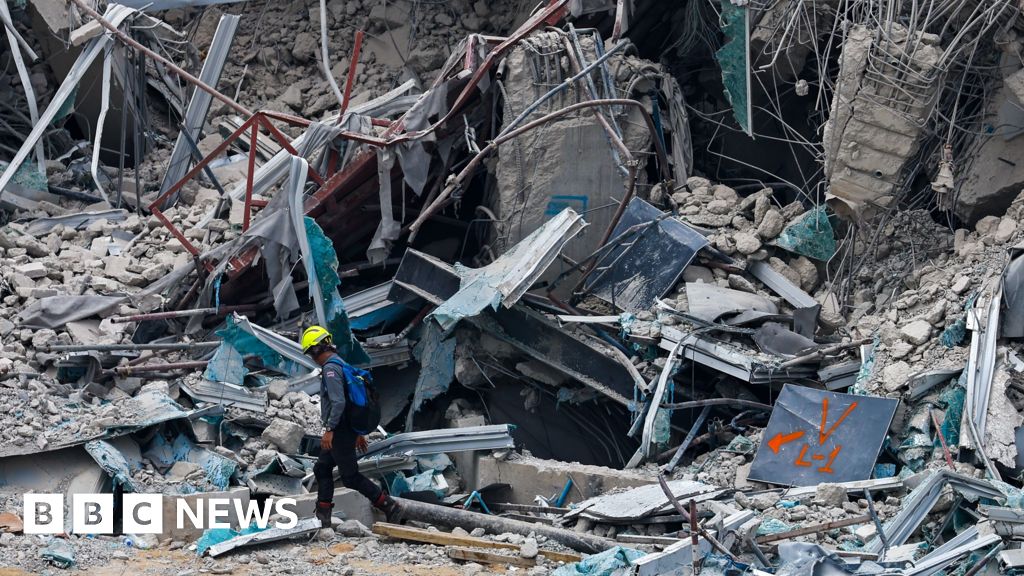Esme Stallard, a climate and science reporter for BBC News, covers the collapse of a high-rise building in Bangkok following an earthquake in Myanmar. The earthquake, which caused over 1,000 deaths, highlighted the seismic activity in Myanmar, a region prone to earthquakes due to its location on multiple tectonic plates. Dr. Rebecca Bell explains the geological factors that contribute to earthquakes in the region, such as the convergence of tectonic plates and the presence of faults like the Sagaing fault.
The earthquake in Myanmar, with a magnitude of 7.7, was felt far away in Bangkok due to its shallow depth and the energy released during the event. Dr. Bell explains how the straight nature of the fault can lead to large earthquakes that affect a wide area. The type of soil in Bangkok also contributed to the intensity of the shaking felt in the city.
In Bangkok, an unfinished skyscraper collapsed during the earthquake, raising questions about the safety standards for construction in earthquake-prone areas. Dr. Christian Málaga-Chuquitaype notes the lack of comprehensive safety standards in Bangkok prior to 2009, leaving older buildings vulnerable. The collapse of the new building was attributed to the construction process and design choices that did not meet earthquake-resistant standards.
In Myanmar, buildings in Mandalay were likely not constructed to withstand earthquakes, as the country has faced challenges in enforcing building codes and regulations. Dr. Ian Watkinson highlights the impact of poverty, political instability, and other disasters on the country’s ability to address seismic risks in building design and construction. Esme Stallard Ini membuat mereka sangat rentan terhadap proses yang disebut likuifaksi.
Ini terjadi ketika tanah memiliki kandungan air yang tinggi, dan getaran menyebabkan sedimen kehilangan kekuatannya dan berperilaku seperti cairan. Hal ini meningkatkan risiko tanah longsor dan runtuhnya bangunan, karena tanah tidak lagi mampu menopang mereka.
Dr So memperingatkan bahwa selalu ada “peluang” kerusakan lebih lanjut pada bangunan di dekat garis sesar akibat gempa susulan – guncangan yang mengikuti gempa bumi, yang dapat disebabkan oleh transfer energi tiba-tiba ke batuan di sekitarnya.
“Sebagian besar waktu gempa susulan lebih kecil dari gempa utama, dan cenderung berkurang ukurannya dan frekuensinya seiring waktu,” katanya.
Pelaporan tambahan oleh Vicky Wong

